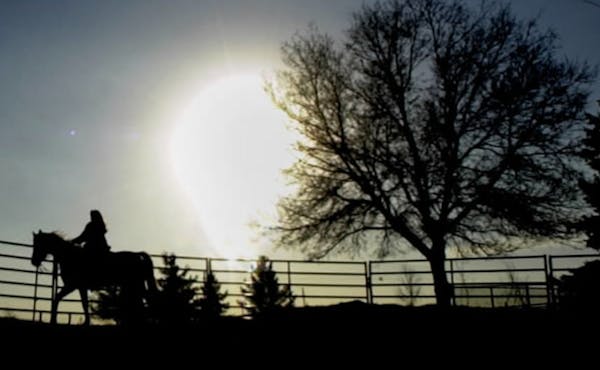Downtown Minneapolis is now home to nearly 50,000 people, thanks to newcomers who have moved into apartment towers rising from the Mill District to the North Loop to Loring Park.
The latest population numbers were presented during the annual meeting of the Minneapolis Downtown Council. Hundreds attended the meeting Wednesday at the Minneapolis Armory, where business leaders recapped the last year for downtown Minneapolis.
More than 49,780 people currently live downtown, which is bordered by Interstate 94 and I-35W and includes Nicollet Island and neighborhoods directly across the river. The 14.5 percent increase from 2017 was the largest year-to-year jump in more than a decade, according to the business association.
Steve Cramer, president and CEO of the Downtown Council, said he expects the district to easily surpass the 50,000 milestone this year.
"Overall, it's nothing but a positive for the entire downtown community to have this growth that we're seeing," Cramer said.
Downtown's population has risen steadily for years now. Four new residential buildings contributed to an increase in 2017, and more units opened up last year.
They include 365 Nicollet, a luxury apartment building with 370 units in the heart of downtown, which opened in October. A building boom is happening in Loring Park, where businesses have been demolished to make way for more housing, including a large affordable complex currently under construction.
About half of the $1.8 billion in new construction permits were issued in downtown wards, according to the association. Currently, 2,321 apartment rental units are under construction.
However, rents remain high compared with other areas of the city. The average rent there was $1,728 last year, in a part of town where 41 percent of residents make $35,000 or less, according to the latest estimates from Minnesota Compass, which measures social trends by studying data.
As new downtown residents settle in, Cramer said he expects them to demand more green space, restaurants and other amenities.
Minneapolis City Council Member Steve Fletcher, who represents much of downtown, said the increase in population will lead to more retail. It's visible in Downtown East, he said, where a Trader Joe's opened in a new mixed-use building last year.
Fletcher credits the population growth with making downtown safer. Violent crime dropped by 24 percent last year, according to the association.
"The presence of more people and some of the efforts of a lot of civic groups … have brought a sense of increased safety and vitality that's really making downtown a great place to be," Fletcher said.
Fletcher said he would love for downtown to have a movie theater and other casual entertainment options. The city has also been encouraging owners of mixed-use buildings to consider bringing in these kinds of businesses.
"What's the gap you can close? What's the thing that people still get in their car for?" he asked.
At Wednesday's event, leaders also shared last year's statistics from the Minneapolis Downtown Improvement District. The group's "ambassadors," seen around in their bright green and blue uniforms, erased 5,593 graffiti tags, scraped 16,156 pieces of gum and picked up 30,094 bags of trash from downtown streets.
Miguel Otárola • 612-673-4753

Baseball Metro Player of the Year packs up his five tools and leaves

Prep baseball 2024: 35 Minnesota stars who the recruiters covet
Police searching for St. Paul home intruder who raped, robbed woman

Friend heard money, relationship woes from man tied to Chanhassen killing who took his own life

